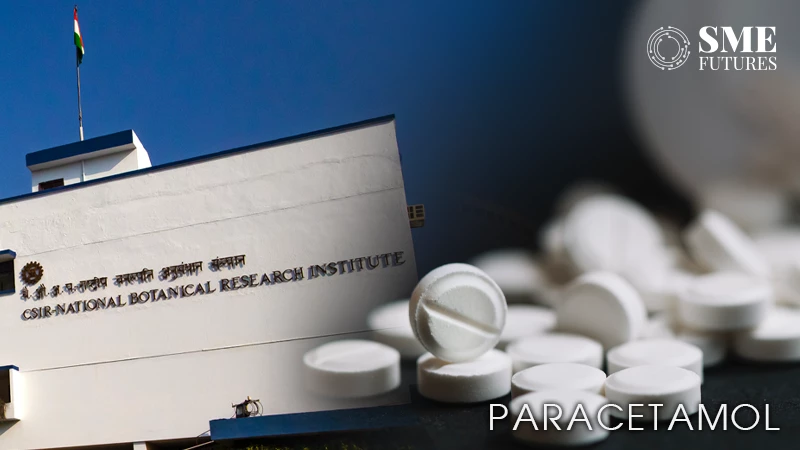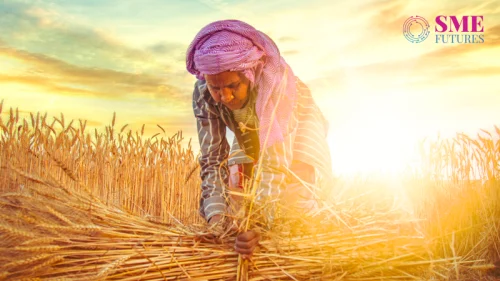India’s march towards self-reliance in pharmaceutical production reached a significant milestone as the Council of Scientific and Industrial Research (CSIR) unveiled an indigenously developed technology for manufacturing paracetamol, a widely used pain reliever and fever reducer. The announcement was made by Union Minister Dr. Jitendra Singh during the 40th Foundation Day celebrations of the Department of Scientific and Industrial Research (DSIR).
Dr. Singh emphasised that this innovation aligns with the government’s Atmanirbhar Bharat vision, reducing India’s dependence on imported raw materials and ensuring a stable domestic supply of this essential drug. Currently, India relies on imports for key paracetamol ingredients, which exposes the nation to supply chain vulnerabilities.
Manufacturing capacity and production
Paracetamol, commonly known as acetaminophen, is a widely used analgesic and antipyretic medication. In India, the production and importation of paracetamol have evolved significantly over the years.
As of the early 1990s, India had an installed capacity to produce approximately 18,000 tonnes of paracetamol annually, with over 60 manufacturing units operating nationwide. Domestic production increased from about 580 metric tonnes in 1980-81 to nearly 10,400 metric tonnes in 1992-93.
Imports and exports
Despite substantial domestic production, India continues to import paracetamol to meet its growing demand. Between March 2023 and February 2024, India imported 439 shipments of paracetamol from 30 countries, with Germany, the United States, and France being the top exporters, accounting for 62 per cent of these imports.
Conversely, India is also a significant exporter of paracetamol. For instance, during the COVID-19 pandemic in 2020, India shipped 1.9 million tablets and other forms of paracetamol to 31 countries, underscoring its role as a major supplier in the global pharmaceutical market.
According to Volza’s India Import data, India imports most of its Paracetamol from China, Germany, and France.
Game-changer for pharmaceuticals
The technology will be implemented by Karnataka-based Satya Deeptha Pharmaceuticals Ltd., which aims to manufacture affordable paracetamol domestically. This move not only strengthens India’s pharmaceutical sector but also establishes the nation’s technological prowess in essential medicine production.
On the other hand, the development of indigenous technology for paracetamol production in India is expected to have a positive impact on prices. By reducing dependence on imported raw materials, the cost of production can be lowered, which should translate to more affordable prices for consumers. Additionally, increased domestic production can help stabilise supply and reduce the impact of global supply chain disruptions on prices.
Overall, this move towards self-reliance in paracetamol production is likely to make the medication more accessible and affordable for the Indian population.
Dr. Singh highlighted other recent breakthroughs, including Nafithromycin, India’s first indigenous antibiotic to combat drug-resistant bacteria, and the successful gene therapy trials for haemophilia. These developments underscore India’s commitment to leveraging science for societal benefit.
Boosting MSMEs through technology transfers
The Foundation Day also marked the transfer of 16 additional technologies from CSIR to MSMEs. This brings the total to 57 under the “100 Days, 100 Technologies” initiative, which fosters collaboration between government research bodies and small enterprises. These transferred technologies span industrial instruments, IoT innovations, and healthcare applications.
Principal Scientific Advisor Prof. A.K. Sood emphasised transitioning India from a service-oriented to a product-based economy, leveraging indigenous designs and innovations. He cited the USA as an example, where tech products significantly contribute to GDP growth.
Dr. Singh called for greater collaboration between government and non-government sectors, underscoring the importance of funding diversification and knowledge-sharing partnerships. Initiatives like Anusandhan NRF, designed to attract 60 per cent of its funding from non-government sources, are critical steps in this direction.
The announcement of indigenous paracetamol technology marks the beginning of what Dr. Singh described as another “power-packed year” for science and technology. With a focus on self-reliance, innovation, and global competitiveness, India’s scientific community is poised to make significant strides in 2025.
By reducing dependency on imports and fostering collaboration between research institutions and MSMEs, India is setting an example of how targeted innovation can catalyse national growth and resilience.











